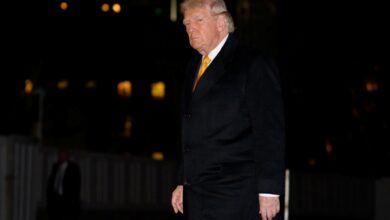How does the NBA financial system work?
The luxury tax and other exceptions to the financial rules of the NBA have allowed millionaire transfers like those that have occurred in recent days

NBA's game at the Thomas & Mack Center, Las Vegas /Reference image / Pixabay
LatinAmerican Post | Pedro Bernal
Listen to this article
The most valuable player in the NBA Finals (National Basketball Association), Kawhi Leonard, surprisingly left Toronto to join the Los Angeles Clippers, where he will meet another of the best players in the league, Paul George, to conquer the next season's title. The consequences for the league are clear, but understanding the financial system that allowed it is a bit more difficult.
Leer en español: ¿Cómo funciona el sistema financiero de la NBA?
In the sports leagues of the United States, in order to maintain sporting parity between teams that may have radically different incomes, they have introduced salary caps. The salary cap is the same for all teams and sets the maximum amount of money that can be used to hire players.
Currently, the salary cap is $79.5 million dollars for teams in the NHL (National Hockey League), $188.2 million for the NFL (National Football League) and $109.1 million for the NBA.
While the NFL and NHL teams have a hard salary cap, meaning that they cannot exceed the salary cap under any conditions, the NBA teams operate under a soft salary cap, unique among the major sports leagues in the world. The soft salary cap allows them to exceed the maximum figure of $109.14 million dollars with a series of conditions and under special circumstances, and it is precisely what makes it difficult to understand for those who are approaching the league for the first time.
The 'luxury tax', a tax for those who want to spend more
Many may wonder, if there is a limit to the amount of money that teams can offer their players, how is it that they form star-studded teams like the Golden State Warriors? The reality is that the formation of these super teams is done under the same salary cap rules.
One of the options that teams have to face if they want to exceed the salary cap is a fine, also called 'luxury tax'. But overcoming the salary cap alone does not merit the tax, instead, the teams pay it only if they exceed the so-called 'tax level' when the purchase is really above the initial cap. This year, the 'tax level' is at $132.6 million.
Depending on how much above the 'tax level' a team is, it determines the amount that must be paid to the league as a fine for paying too much to its players. Fines range from $1.50 for each dollar that they pay above the 'tax level' for those who exceed it by less than $5 million dollars, up to $3.75 for each dollar of excess for those who exceed it by more than $20 million.
To prevent teams with wealthy owners or with greater sources of income abuse this system, the league also introduced a higher tax for teams that exceed the 'tax level' in repeated seasons, which can go up to $4.75 per every dollar of excess they pay.
The Golden State Warriors, for example, to form the star team that led them to five consecutive finals of the NBA, became frequent customers of the 'luxury tax'.
This year they had to negotiate new contracts with some of their biggest stars, such as Klay Thompson and Kevin Durant. If they wanted to keep the team intact, the Warriors would be looking at a record of $375 million, well above the 'tax level', which would earn them a $200 million tax for repeatedly exceeding this level.
Read also: Women's Football World Cup Awards: this is the huge salary gap in football
Teams with less money, like the Charlotte Hornets, cannot exceed the 'tax level' with as much confidence and consistency as the Warriors. This year, the Hornets (Michael Jordan's team) were looking to keep their star player, Kemba Walker, and the rules of the league allowed them to offer up to $221 million. The Hornets would not pay him that much money since Jordan refused to pay Walker an amount that would put the team in the tax territory. Instead, they offered him a $140 million contract, which Walker refused to sign, even though he signed with the Boston Celtics for the same amount.
Other exceptions
One of the best-known exceptions to exceed the salary cap of the league is the so-called 'Larry Bird exception'. Called thus by the legendary player of the Celtics, this exception allows the team to sign a contract with a player who has played at least three consecutive years with them by an amount that can exceed the salary cap.
This year, the exception of Larry Bird was used by two of the best Eastern teams to retain key players. The Milwaukee Bucks used it to retain Khris Middleton, offering him a 5-year, $178 million contract, and the Philadelphia 76ers used it to keep Tobias Harris on a 5-year, $180 million contract.
Another exception, very useful for teams that run out of space for new players, is known as 'minimum salary exception'. This allows the teams to hire as many players as they wish above the salary cap, as long as their contracts pay the minimum allowed by the league and have a duration of up to two years.
This exception is often used by teams that already exceed the salary cap with a lot of money, but are still lacking players to complete the squad. The teams use it to acquire as many free agents as necessary without incurring fines.
While the players who come to a team by the minimum are usually not very good, if a team has clear opportunities to win the championship, very talented players can set aside their pretensions salaries to earn a good but shorter salary and sign for the minimum with that team, another reason why some super teams can be formed.





